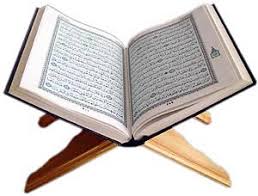INDIGENOUS LANGUAGES AND DEVELOPMENT IN NIGERIA
Farfesa A.H. Amfani
(+234)08035881796
e-mail: ahmedamfani@yahoo.com
President, Linguistic Association of Nigeria,
c/o Department of Nigerian Languages,
Usmanu Danfodiyo University,
P.M.B. 2346, Sokoto, Sokoto State, Nigeria.
Introduction
The present Institute of Nigerian Languages of the University of Nigeria is not a new institution. It is the former National Institute for Nigerian Languages (NINLAN). Indeed the functions and the objectives are very much the same. Essentially, the institute is all out to cater for the development and sustenance of all Nigerian languages. However, under the new administration of the institute and especially under the stewardship of Professor Clara Ikekeonwu, and in line with the vogue around, and more so one initiated by women of caliber, we shall all expect a re-branding of the entire activities of the institute. This public lecture is part of the re-branding.
I have been called upon, in my capacity as the President of the Linguistic Association of Nigeria, to talk on the topic Indigenous Languages and development in Nigeria. The topic sounds simple and straight forward, but on a close examination, it is elusive and controversial. On one hand, it is not easy to say with some degree of precision, the number of indigenous languages available in Nigeria. On the other, it is equally not easy to convince people that indigenous Nigerian languages have any significant role to play in the overall development of the Nigerian nation. My task in this talk is to try and give a picture of the indigenous Nigerian languages with a view to sensitizing Nigerians on the need to appreciate their mother tongues. Another task is to explain how indigenous Nigerian languages can play significant roles in various sheds of development. It must be pointed out here and now that development is a very wide concept and subsumes quite a number of issues.
I divide the lecture into three major sections. There is a section on Nigeria and its indigenous languages. Here, we remind ourselves what the political entity Nigeria is: how it came about and its present structure. Another section discusses the concept of development and various forms of development. The third section attempts to show how indigenous languages can be meaningfully engaged in various forms of development, and especially scientific and technological development.
Takarda/Muƙala
- Gudunmmawar Harshe...
- Matsayin Sana'o'i...
- Tasirin Mawaƙan Baka...
- Jiya da Yau...
- Gudunmawar Shafuka..
- Bitar Ma'anar Kalmar 'Hausa' ...
- 'Fathers' and 'Mothers' in Hausa...
- Friendship Requires Visits...
- Indigenous Languages...
- Dialectal Variation...
- Ƙasar Zamfara a Bakin Makaɗan Baka
- Makaɗa Ibrahim Narambaɗa
- Mukala kan Dankwairo
- Ganuwar Birnin Kano...
- Fir'aunonin Masar Ta Dauri
- Shari’ar Muslunci...
.jpg) Kwamfuta
Kwamfuta
Tura wannan shafi zuwa ga abokai ta:
TweetLatsa madannin "Like" ka nuna goyon baya ko kuma "Share" ka yaɗa shafin
 Rumbun Ilimi
Rumbun Ilimi
